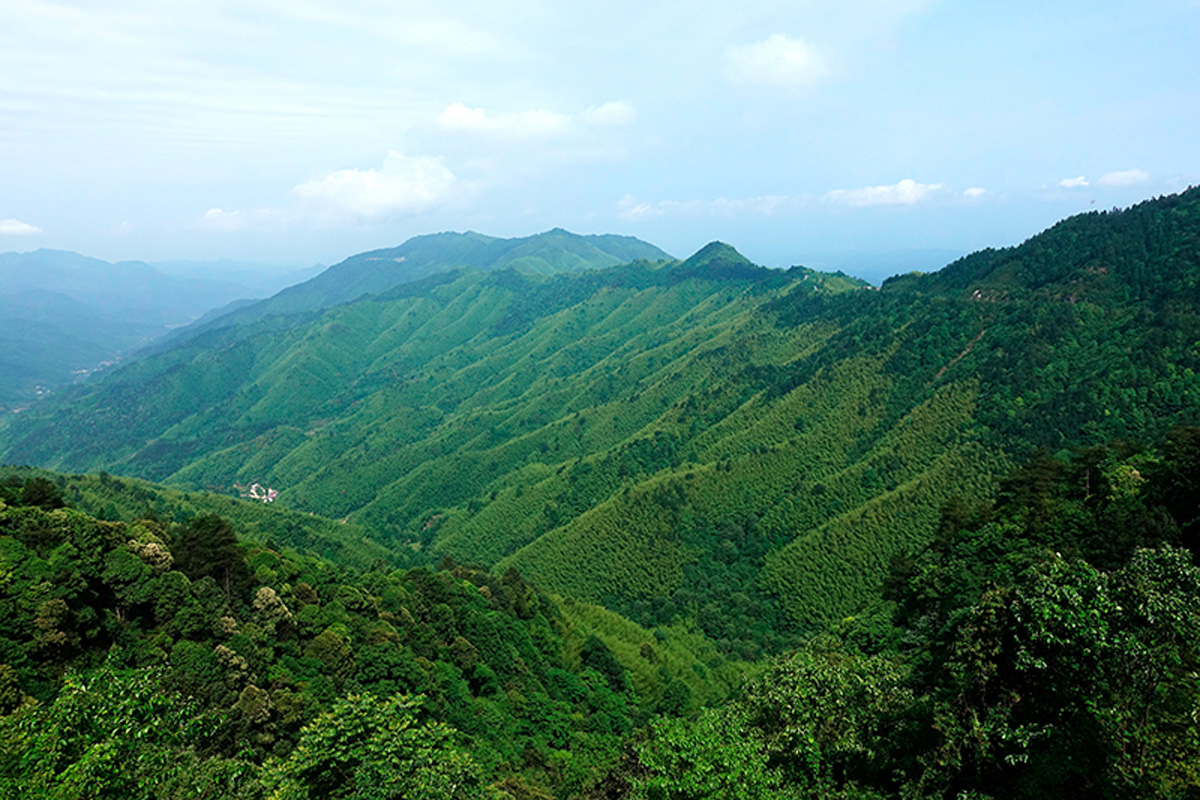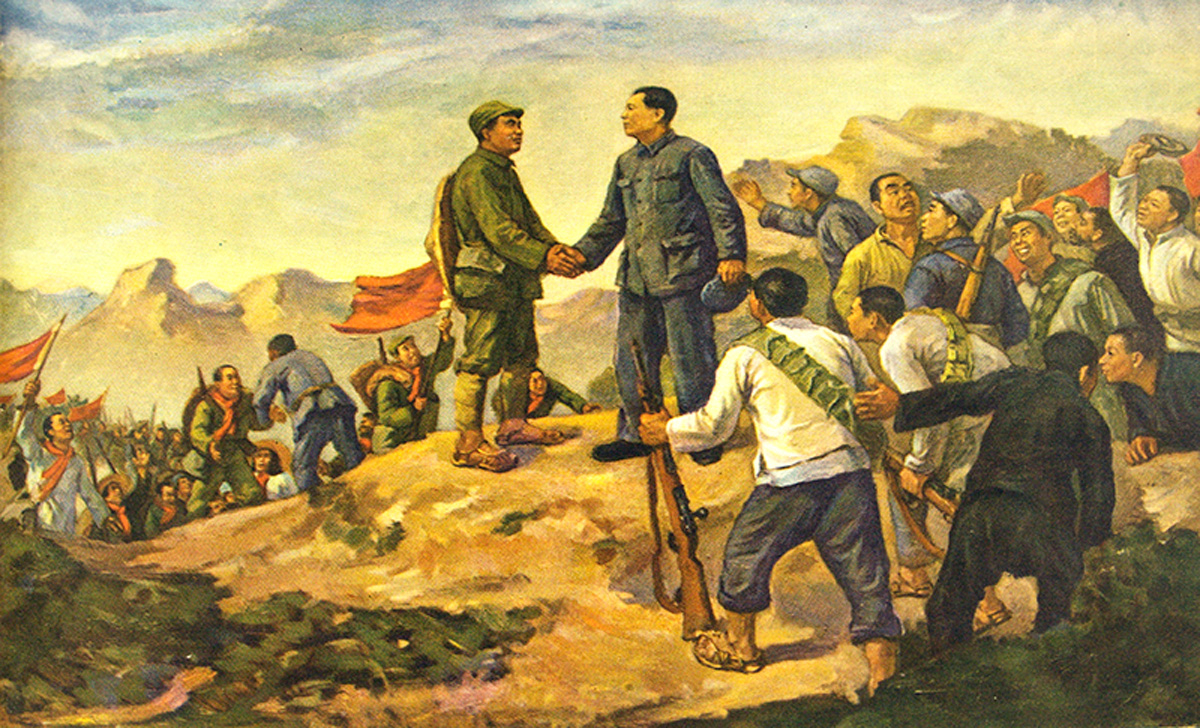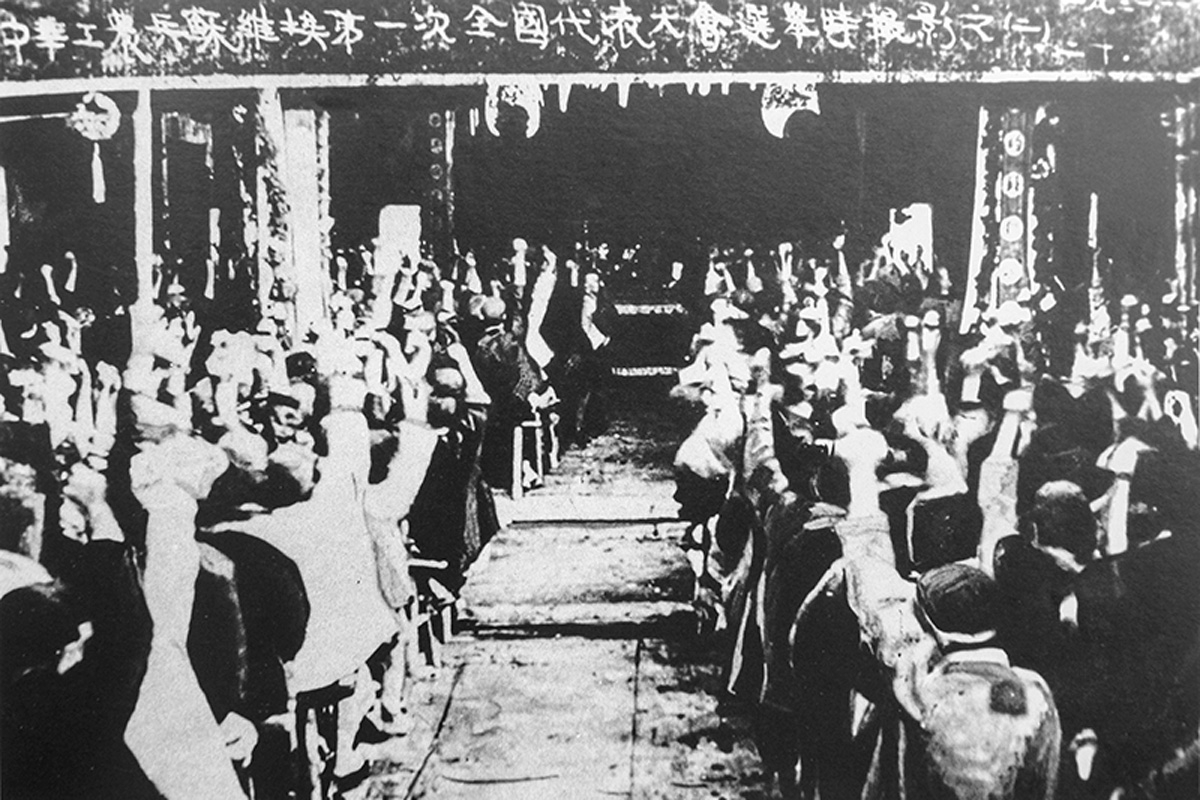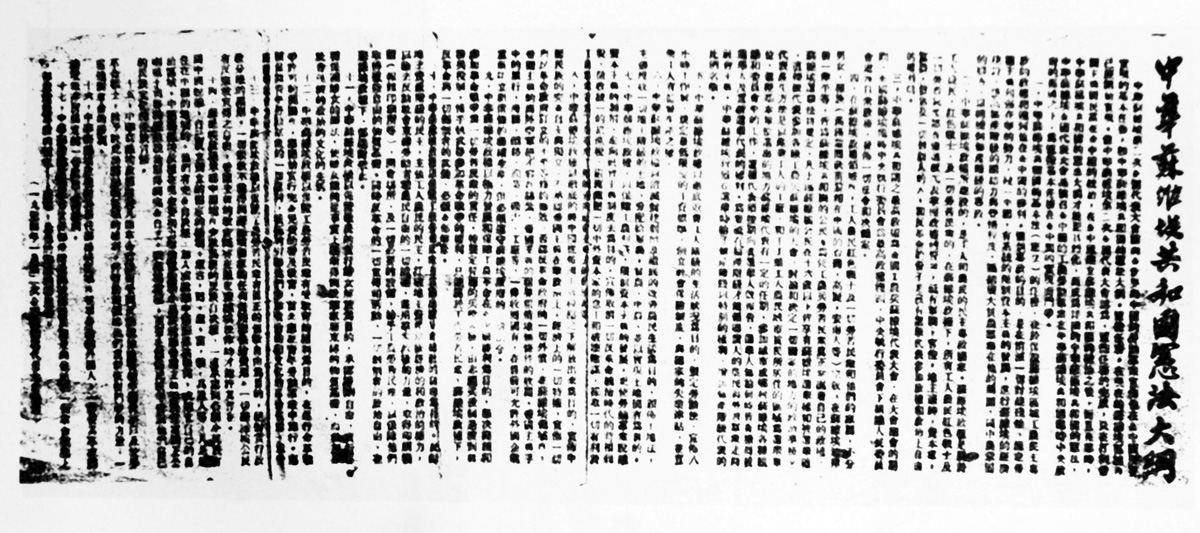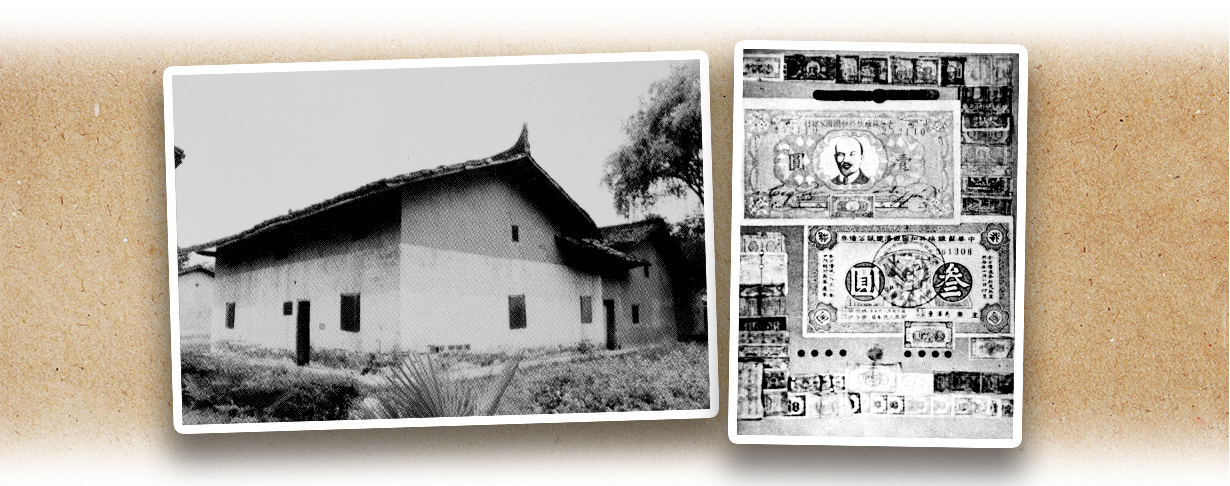After many failed armed struggles, Mao Zedong (毛澤東) and other leaders disagreed with the guideline by the Communist International (Comintern) and the Central Committee of the Chinese Communist Party (CCP, 中國共產黨) to launch all-out urban uprisings. Instead, they insisted on the strategy of “encircling the cities from the rural areas”. In October 1927, Mao led the remaining troops of the Autumn Harvest Uprising (秋收起事) to Jinggang Mountain (井岡山) to develop the rural revolutionary base. In April of the following year, Zhu De (朱德) and Chen Yi (陳毅) led the remaining troops of the Nanchang Uprising (南昌起事) and the peasants’ army of the Southern Hunan Uprising (湘南起事) to Jinggang Mountain. They joined Mao Zedong’s troops and formed the Fourth Corps of the Chinese Workers’ and Peasants’ Red Army. Zhu served as commander of the Fourth Corps, Mao as party representative and Chen as director of the Department of Politics. Soon after the formation, Peng Dehuai (彭德懷) also led his troops to join the Fourth Corps. After a long period of fighting, Zhu and Mao developed a set of guerrilla warfare strategies that were not only suitable for them, but also enabled the Red Army to survive and develop.
In January 1929, Mao, Zhu, and Chen led the main force of the Fourth Corps to march into southern Jiangxi Province (江西) and successively developed revolutionary base areas there and western Fujian Province (福建), which were then developed as the centre for the formation of the Central Revolutionary Base, i.e., the Central Soviet Zone. Following the decision of the CCP Central Committee, the Central Bureau of the CCP Soviet Zone was established in January 1931. Zhou Enlai (周恩來), who moved south from Shanghai (上海), later served as secretary of the Central Bureau. In November of the same year, the First National Congress of the Soviet Republic of China was held in Ruijin (瑞金), Jiangxi, at which the Provisional Central Government of the Soviet Republic of China was established. Mao Zedong acted as chairman, while Xiang Ying (項英) and Zhang Guotao (張國燾) as vice-chairmen. Later, the Soviet Republic of China’s Central Revolutionary Military Committee was formed, with Zhu as chairman, and Wang Jiaxiang (王稼祥) and Peng Dehuai (彭德懷) as vice-chairmen. The Provisional Central Government of the Soviet Republic of China was in Ruijin. By then, the CCP’s central revolutionary base was officially formed to govern and lead the struggles in the Soviet Zones nationwide.
|
|
Why did the CCP name the rural revolutionary bases in Jiangxi and other places as “Soviet Zones” and the Red Regime as the “Soviet regime”? |
|
|
See answer below. |
The current view of Jinggang Mountain in Jiangxi. In the late 1920s, the CCP established its revolutionary base there.
Painting: Mao Zedong and Zhu De (with the hat) shook hands when their troops merged in Jinggang Mountain. After the Autumn Harvest Uprising failed, Mao led the remaining troops to Jinggang Mountain in October 1927 to develop a rural revolutionary base. In April of the following year, Zhu led the remaining troops of the Nanchang Uprising to Jinggang Mountain to join Mao.
After their troops converged in Jinggang Mountain, Mao Zedong and Zhu De named the merged force as the Fourth Corps of the Chinese Workers’ and Peasants’ Red Army, with Zhu as commander and Mao as party representative. Left: The army flag of the Fourth Corps of the Chinese Workers’ and Peasants’ Red Army. Right: A story sculpture of the Red Army in Jinggang Mountain.
A re-enaction of the Battle of Huangyangjie (黃洋界保衛戰) by sculptures. In August 1928, the Kuomintang of China (KMT, 中國國民黨) army attacked Jinggang Mountain and was defeated by the Red Army at Huangyangjie. Being the main tactic of the Red Army, guerrilla warfare had a huge impact on the CCP’s subsequent armed struggles.
After the Jinggang Mountain base was consolidated, the Red Army subsequently developed its revolutionary bases in southern Jiangxi and western Fujian. In November 1931, the First National Congress of the Soviet Republic of China was held in Ruijin, Jiangxi. The photo shows the congress venue.
In November 1931, the founding congress announced the establishment of the Provisional Central Government of the Soviet Republic of China in Ruijin, Jiangxi. By then, the CCP’s central revolutionary base was officially formed. The photo shows the former site of the Provisional Central Government of the Soviet Republic of China.
A group photo of the members of the Central Bureau of the CCP Soviet Zone taken in Ruijin, Jiangxi, in November 1931. From left: Gu Zuolin (顧作霖), Ren Bishi (任弼時), Zhu De, Deng Fa (鄧發), Xiang Ying (項英), Mao Zedong, and Wang Jiaxiang.
At the founding congress of the Chinese Soviet convened in Ruijin, Jiangxi, in November 1931, the Constitutional Outline of the Soviet Republic of China was passed.
The National Bank of the Soviet Republic of China was established in Ruijin in February 1932. The photos show the Bank’s former site along with the bonds and banknotes it issued.
The national emblem of the Soviet Republic of China and Struggle, the official organ of the Central Bureau of the CCP Soviet Zone. Under the control of the CCP, the Soviet Zones became a country within a country and continued to expand.
|
|
Why did the CCP name the rural revolutionary bases in Jiangxi and other places as “Soviet Zones” and the Red Regime as the “Soviet regime”? |
|
|
“Soviet”, or совет in Russian, means “council” in English, which originated from the Russian Revolution in 1905. After the October Revolution in 1917, the regime was called the Soviet of Workers, Peasants and Soldiers, while the name of the country was the Russian Soviet Republic or the Union of Soviet Socialist Republics (USSR). Since 1927, the Red Army developed by the CCP in various areas emulated the Soviet Union to name their base areas as “Soviet Zones” and the red regime “Soviet”. Take the Central Soviet Zone as an example, the Soviet Republic was established in Ruijin, Jiangxi, on 7 November 1931. Mao Zedong was the chairman, while Xiang Ying and Zhang Guotao were the vice-chairmen. Meanwhile, legal files such as the Constitutional Outline of the Soviet Republic of China, land decrees, labour laws, and decisions on economic policies were also formulated. |
Source of most photos used in this feature piece: Visual China Group (pictures 1,7), Fotoe (pictures 2-6, 8-10).





